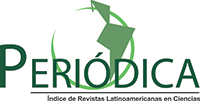Aleitamento materno em prematuros egressos de hospitais amigos da criança do Sudeste
DOI:
https://doi.org/10.5216/ree.v20.50963Palavras-chave:
Aleitamento Materno, Recém-Nascido Prematuro, Prevalência, Enfermagem NeonatalResumo
Descrever a prevalência de aleitamento materno exclusivo (AME) e os fatores associados na alta hospitalar, no primeiro mês pós-alta e aos seis meses de prematuros assistidos em dois hospitais Amigos da Criança do sudeste brasileiro. Estudo descritivo e prospectivo.Participaram 84 prematuros que tiveram alta durante três meses e 71 mães que atenderam aos critérios de inclusão. Coleta em prontuários e entrevistas com mães por instrumento estruturado. 31,0% estavam em AME na alta e no primeiro mês no domicílio e 9,1% aos seis meses. Foram associados ao AME na alta: estado civil, ocupação materna, consultas de pré-natal, tipo de parto, idade gestacional, peso ao nascer, tempo de internação e ventilação mecânica; no primeiro mês pós-alta: estado civil, ocupação materna, consultas de pré-natal, tipo de gestação e tempo de internação; aos seis meses: renda familiar. As taxas de AME em prematuros estão aquém das recomendações, necessitando de programas de intervenção especiais.Downloads
Não há dados estatísticos.
Downloads
Publicado
06/11/2018
Edição
Seção
Artigo Original
Licença
Copyright (c) 2018 Revista Eletrônica de Enfermagem

Este trabalho está licenciado sob uma licença Creative Commons Attribution 4.0 International License.














